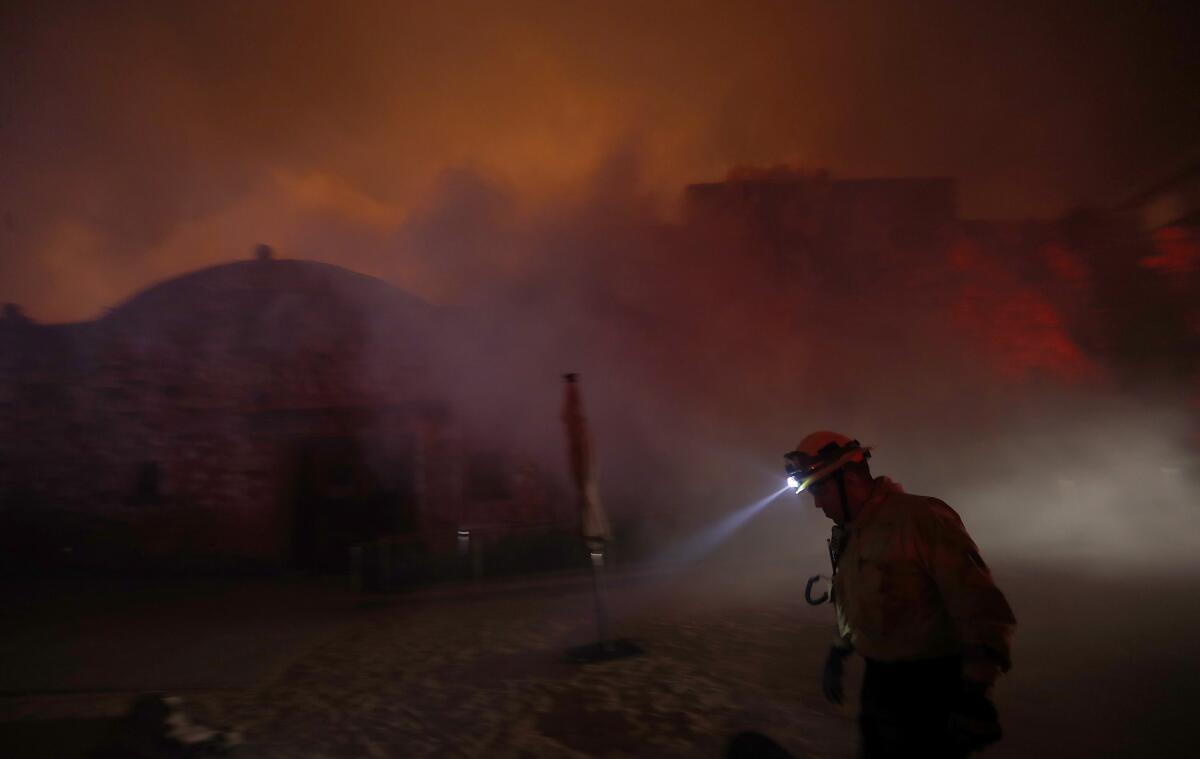Massive new power outages expected across California as powerful winds return

- Share via
Californians are bracing for power outages throughout the state as utilities consider sweeping blackouts amid returning high winds.
Pacific Gas & Electric Co. announced Monday it could shut off power to 605,000 customers Tuesday and Wednesday in its latest bid to reduce the wildfire risk. That means well over 1 million people could lose power.
The counties are Alameda, Alpine, Amador, Butte, Calaveras, Contra Costa, El Dorado, Humboldt, Kern, Lake, Marin, Mendocino, Napa, Nevada, Placer, Plumas, San Mateo, Santa Clara, Santa Cruz, Shasta, Sierra, Siskiyou, Solano, Sonoma, Tehama, Trinity, Tuolumne, Yolo and Yuba.
Some shutoffs took place Tuesday morning.
That blackout would cover more than two dozen Northern California counties and would come just days after a much larger power shut-off that covered nearly 1 million customers over the weekend. That outage is believed to have affected more than 2 million residents in the Bay Area and other northern regions.
To the south, a forecast of more Santa Ana winds prompted Southern California Edison to say it could shut off power to more than 350,000 customers. Those shut-offs include Los Angeles, Ventura, Santa Barbara, San Bernardino and Riverside counties.
The blackouts are a new and controversial tactic designed to prevent wind-driven brush fires caused by downed utility lines. Officials think the tactic is effective. But two major fires this month — the Kincade fire in Sonoma County and the Saddleridge fire in L.A. — may have been caused by downed power lines.
With the Kincade fire spreading, Santa Rosa residents were forced to evacuate in darkness early Sunday amid PG&E power outages, using flashlights and cellphones as light sources.
Elsewhere, businesses have closed, and plans have been canceled. Food has spoiled in refrigerators.
PG&E on Monday revealed it had failed to notify about 23,000 of its customers of precautionary power shutdowns earlier this month and also disclosed that its equipment malfunctioned near two fires that broke out in Contra Costa County on Sunday afternoon.
The utility identified the incidents in filings to the California Public Utilities Commission the same day the CPUC announced it would investigate how PG&E and other utilities handled shut-offs this year amid competing demands. Critics want PG&E to stop causing more wildfires, but the utility also has come under fire for the widespread blackouts, often without adequate notice to the public and vulnerable populations.
The utility de-energized lines to 729,000 of its customers between Oct. 9 and 12, but notifications were not sent to about 23,000 customers, including 500 with medical conditions, PG&E stated in a CPUC filing.
The utility failed to notify some people because, among other reasons, there was no contact information on file with the company or the customers were overlooked because of the shifting grid patterns that the utility was establishing, according to PG&E officials who declined to comment beyond what was stated in the report.
The company said it tried to reach customers who required power for medical equipment — known as medical baseline customers — through any means necessary, including phone calls, text messages, emails or knocks on the door.
“Of the 30,026 medical baseline customers impacted, PG&E verified 29,144 received notice prior to de-energization,” the report stated. “A total of 28,138 confirmed receipt of a notification, which included 5,080 door knocks. The medical baseline customers that did not confirm receipt of an automatic notification prior to de-energization had received multiple contact attempts.”
PG&E, which filed for bankruptcy this year, faces liabilities for causing several California wildfires, and it has recently faced accusations it is triggering power shutdowns mainly to avoid further financial exposure.
More to Read
Sign up for Essential California
The most important California stories and recommendations in your inbox every morning.
You may occasionally receive promotional content from the Los Angeles Times.














